Tennis Balls – The Ultimate Guide
The tennis ball is one of the central components of tennis equipment. Without it no game or training is possible. Together with the tennis racket it has a significant influence on the whole game.
Even if the differences are not visible externally, tennis balls can have different characteristics. Did you know that there are 5 different types of tennis balls?
The answer to this question can be found here in our tennis ball guide. But this is only a small part.
In our comprehensive overview you will find all information and tips that are important for you as a tennis player. From the structure of the ball to the individual playing characteristics.
Contents
1. Structure
2. Types
3. Specs
4. Durability
5. Manufacturing
1. Structure
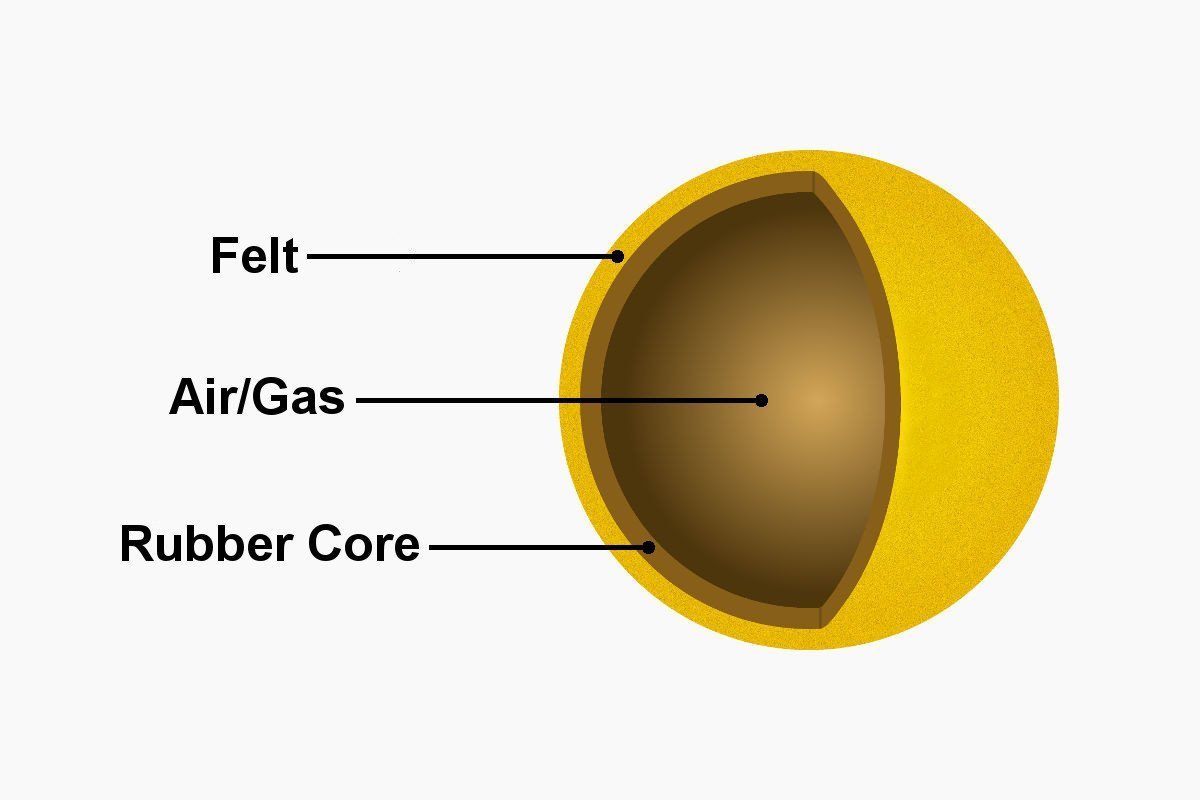
A tennis ball basically has two components, a ball core and a felt layer.
The ball core consists of two hemispheres which are glued together. It is hollow inside and consists of a rubber-like mixture of different materials.
The core influences the basic playing characteristics of the tennis ball, especially the weight and bounce. Depending on the type of ball, the rubber core is filled with special gas or normal air.
On the outside, the ball core is surrounded by a protective layer of felt. This felt layer is particularly hard-wearing and thus ensures greater durability. It also improves the spin properties of the ball.
The yellow colour of the felt is characteristic for the tennis ball. This gives the ball the necessary visibility on the court.
2. Types
Depending on the manufacturing process, tennis balls have different playing characteristics. The most important feature is the filling of the ball core. It makes a big difference whether you play with an air-filled or a gas-filled tennis ball.
The pressure and thickness of the rubber core also play a big role. In general, tennis balls can be divided into two categories, pressurized balls and pressureless balls.
Pressurized Tennis Balls
Pressurized balls are tennis balls filled with gas (e.g. nitrogen). The gas ensures that there is a high pressure inside the rubber core. This improves the bounce characteristics of the tennis ball. This ball offers you a very good playing feel, which is why it is especially used in competitions.
However, you will have to make sacrifices in terms of durability. Since pressurized balls have a thin rubber core, the gas escapes over time. This leads to a loss of pressure, which reduces the bounce of the ball noticeably.
For this reason pressurized balls are always sold in airtight cans. You can recognise this can by the fact that it hisses when you open it.
Pressureless Tennis Balls
With pressureless balls there is air in the core. Unlike the pressurized tenis ball, no additional pressure is added by the machine. Here the two rubber hemispheres are glued together under normal air pressure.
Another difference to the pressurized ball is the thickness of the rubber core. This is much greater with pressureless balls.
The material composition of the rubber core also varies. This is because in pressureless balls, the rubber core alone influences the bouncing behaviour of the balls. Therefore, particularly elastic materials are used for the core.
The biggest advantage of pressureless balls is their long durability. Since they are filled with normal air, no pressure loss can occur. However, the ball feels a little heavier than a pressurized ball when hitting it because of the thick rubber core.
Furthermore, the pressureless ball plays a little slower and does not bounce so high off the ground. If you are a beginner or recreational player, we recommend playing with pressureless balls. They are cheap, durable and above all perfect for tennis training.
Tennis Balls for Kids
For kids there are special tennis balls, so-called “stage” balls. These are intended as practice balls and have a reduced pressure component. Stage balls are therefore particularly soft and gentle on the arms.
Furthermore, these balls have a lower speed and therefore offer the children a higher reaction time. You can recognise stage tennis balls by the two-coloured surface.
There are three pressure levels in total, from stage 1 to stage 3.
Stage 1
Stage 1 tennis balls are 25% less pressure than normal balls. They are marked with a green dot. These balls are perfect for kids who play at an advanced level. They serve to prepare kids for playing with normal tennis balls.
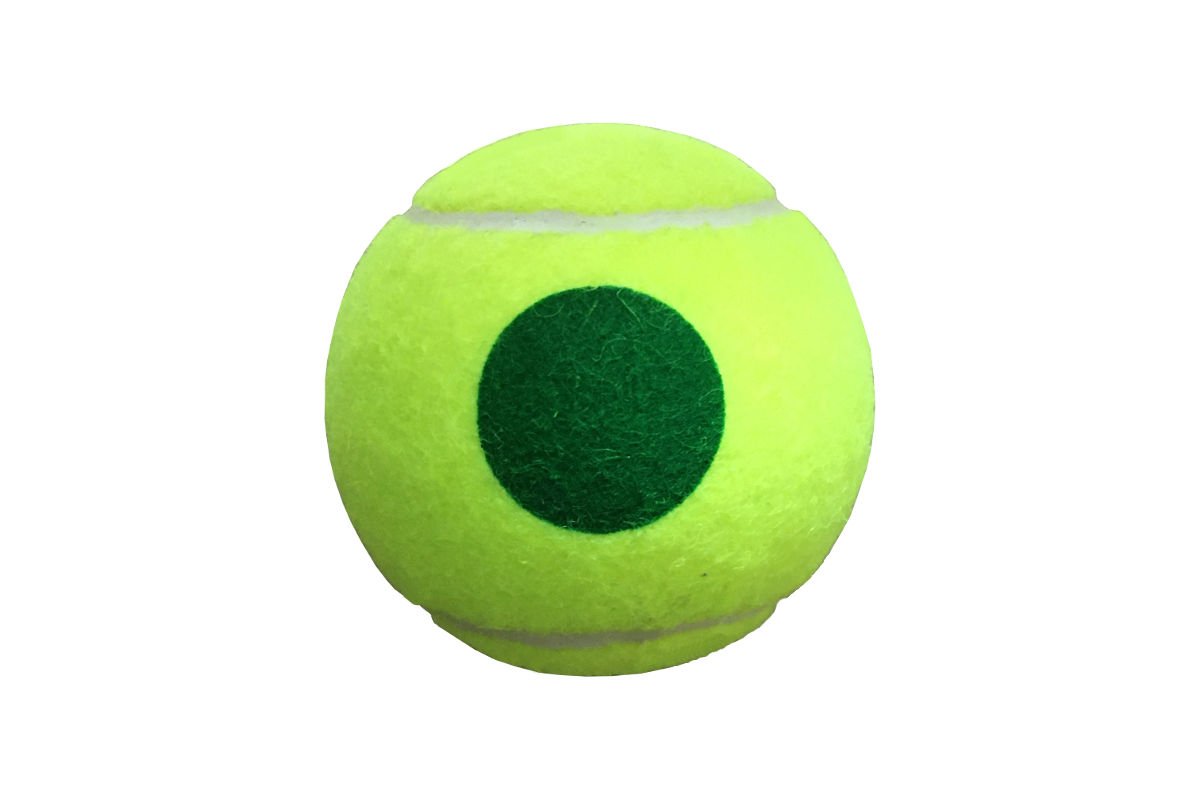
Stage 2
Tennis balls with orange colour belong to stage 2, where the pressure is reduced by 50%. Compared to the stage 1 balls, they are even softer and slower. Stage 2 balls help kids to learn advanced stroke techniques on the court. With these balls kids are usually allowed to play on the midcourt.
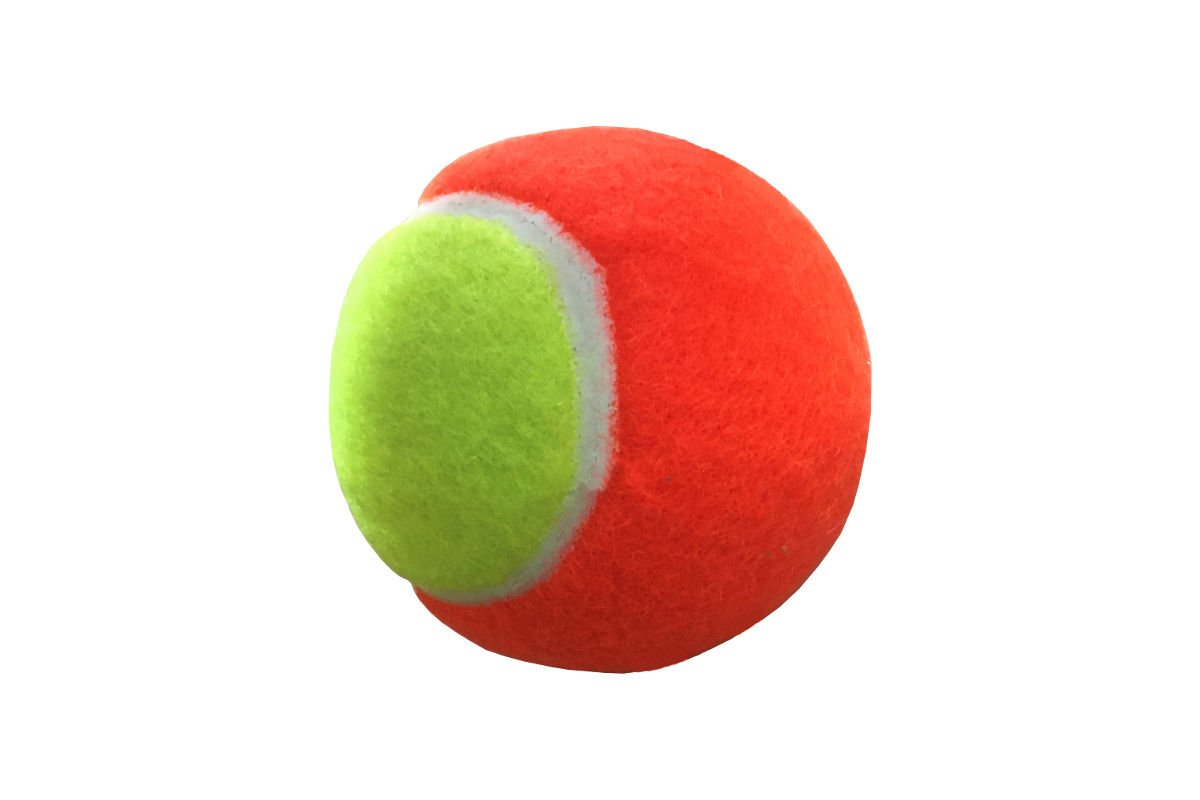
Stage 3
For kids who have just started playing tennis, stage 3 balls are the right choice. These balls are 75% pressure reduced and slightly larger than normal tennis balls. You can recognise them by their red colour.
They make it easier for children to start playing the sport and help them learn the basic stroke techniques and movements. With these balls, children train best on small courts.
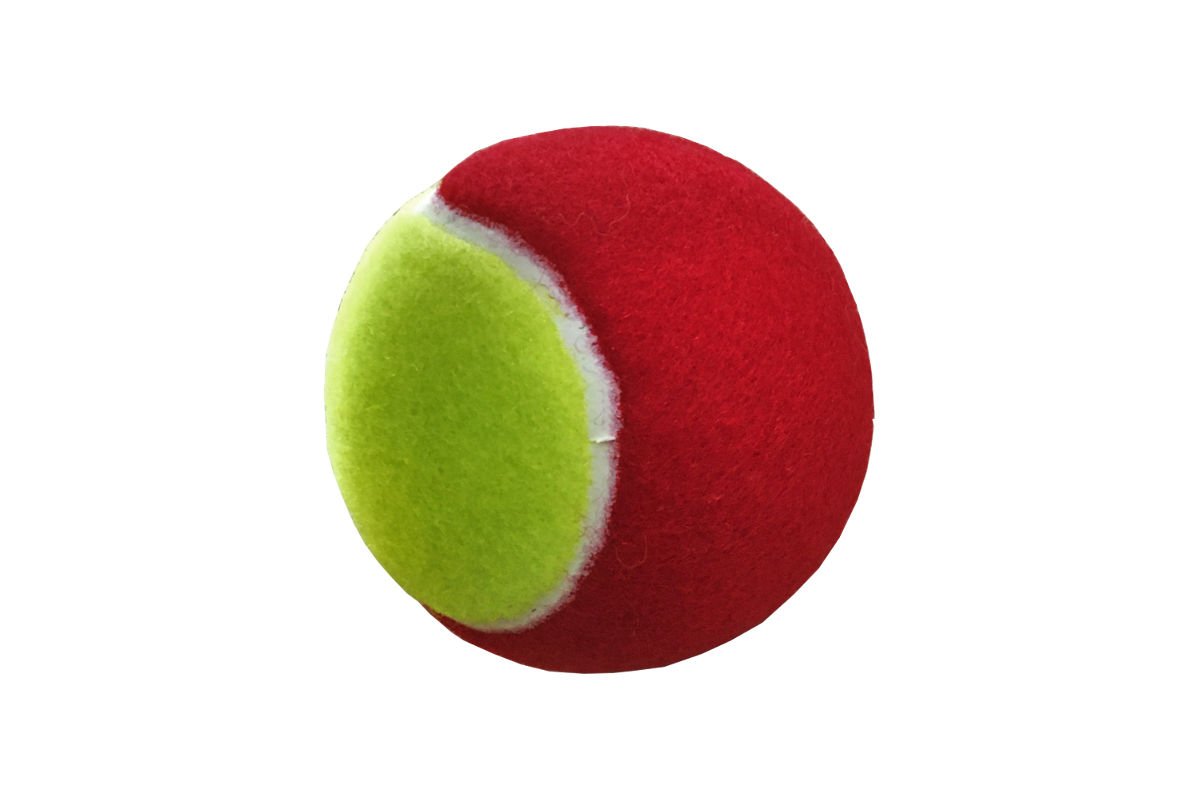
Foam Balls
Tennis balls made of foam are a good addition to the stage 3 balls. They are often used in training with beginners. Foam balls have the lowest speed of all balls. Therefore the reaction time is the highest and therefore the control is the best.
However, the trajectory of these balls is very short. That is why foam balls are more suitable for playing on smaller court.
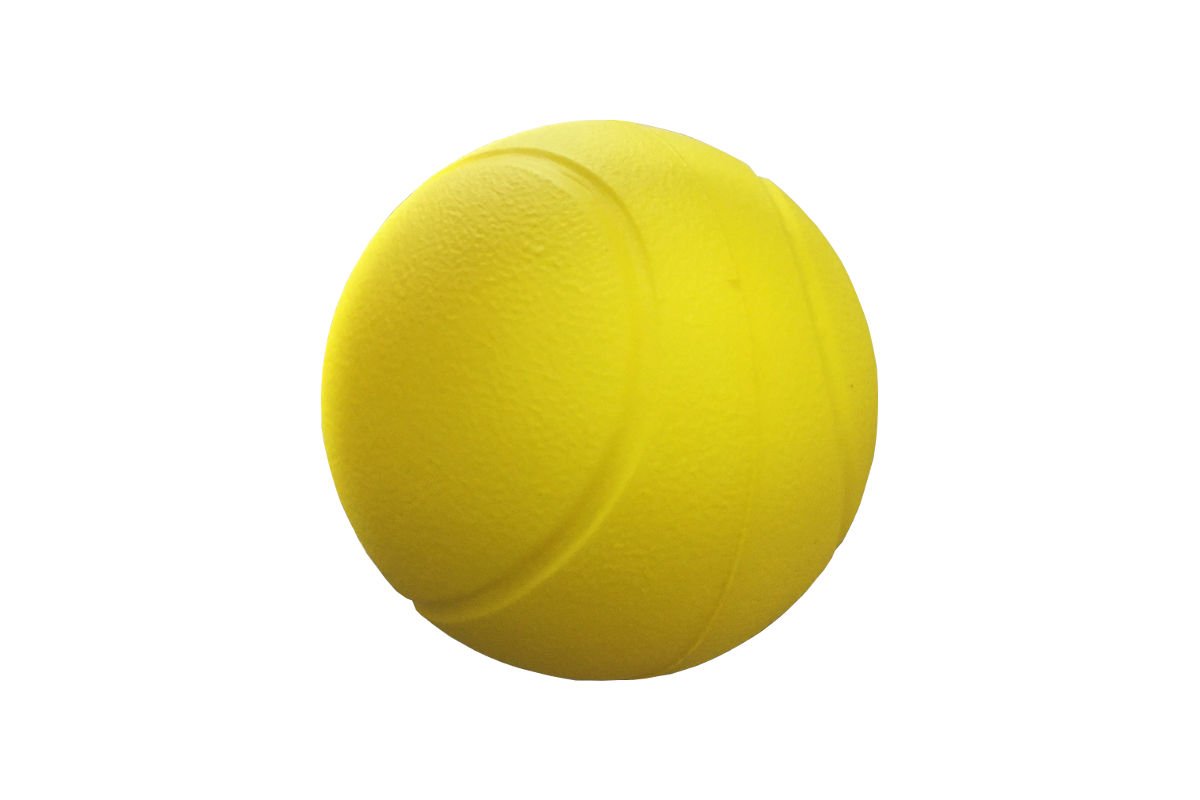
3. Specs
In order for tennis balls to be played at official tournaments, they must meet the criteria of the International Tennis Federation (ITF). Manufacturers must first submit an application to the ITF for their balls.
The balls are then subjected to an elaborate procedure to ensure that they meet the requirements. There are a total of five important requirements that the ball must meet.
Color
The first specification states that the colour of the tennis ball must be yellow or white. Up until the 1970s, the game was played mainly with white balls. Yellow later became the official colour, as these balls have the best visibility on the tennis court. For this reason, nowadays people play almost exclusively with yellow balls.
Quality
According to the second point, the ball must have a uniform shape. In addition, its outer cover has to be seamless. In general, the outer cover is made up of two uniform felt strips that are glued to the rubber core.
This creates the typical white seam on the ball. It is important that this seam is flush. If it is uneven, the bouncing behaviour of the ball would otherwise be distorted.
Size
In the third step the diameter of the ball is measured. This must be between 6.54 cm and 6.86 cm (2.57 – 2.70 inches). Although the tolerance range is rather small, the diameter is still a noticeable factor influencing the acceleration of the ball. In general, smaller balls have a higher speed due to less drag in flight.
Mass
The ITF also sets a standard for the weight of the tennis ball. The weight must be at least 56.0 g (1.98 oz) and must not exceed the upper limit of 59.4 g (2.10 oz).
Here too, weight differences influence the ball’s acceleration and bounce. For example, the bounce of a heavier ball is slightly lower.
Bounce
Finally, the bounce is checked. Here the ball is dropped from a height of 254 cm (100 inches) onto a flat and hard surface, e.g. granite.
In order for the ball to be admitted, its bounce height must be between 135 cm and 147 cm (53 – 58 inches). Both the thickness and the elasticity of the ball core determine how high the tennis ball bounces.
4. Durability
One of the most discussed topics regarding tennis balls is durability. “How long do tennis balls last, and when do I have to change them?” you may ask. This is difficult to answer exactly, but there are some criteria and tips to help you.
Characteristics
For one thing, of course, it depends on the type of ball. Pressurized balls have the problem that the pressure escapes relatively quickly. But here you can take countermeasures. There are special pressure cans suitable for these balls. After each training or game the balls are put into these cans.
Due to the overpressure in the can, your balls cannot lose any internal pressure. This increases the durability and you can enjoy playing with the balls longer. If you play especially with expensive premium balls, this purchase makes sense.
Skill Level
Your skill level is also crucial when choosing tennis balls. Professional players have a higher ball wear than recreational players because their strokes are more powerful and their rallies more intense.
For this reason, professional players often find that their balls are worn out after 1-2 matches. On the other hand, recreational players’ balls usually last for several weeks.
Surface
Also an important point with an impact on durability is the surface on which you play tennis. In principle, the rougher the surface, the more the ball wears. For example, you will have much more ball wear on clay than on a smooth surface such as a hard court.
Weather
In order to keep your balls as durable as possible, you should also pay attention to the weather in which you play tennis. We advise you not to use your best tennis balls when it starts raining. The wetness will soften the felt layer at that moment. The felt will then be worn down more during further playing. This reduces the durability of the ball accordingly.
When do I have to Change the Balls?
Our tip: Take a close look at your tennis balls. Observe the playing characteristics of the balls on the court. If you notice that the bounce of the balls has decreased significantly, we recommend that you change the balls.
Also make sure you look at the surface of the tennis balls. If the felt or the connecting seam shows signs of wear, it is time for new balls.
5. Manufacturing
Many steps are necessary before the tennis ball finds its way from the factory to the tennis court. On the one hand, tennis balls have to withstand high loads and on the other hand, they have to comply with ITF standards. The tolerance range here is very small.
For this reason, precision is the top priority for manufacturers. All balls go through a series of quality controls during production, which makes the manufacturing process very extensive.
The Core
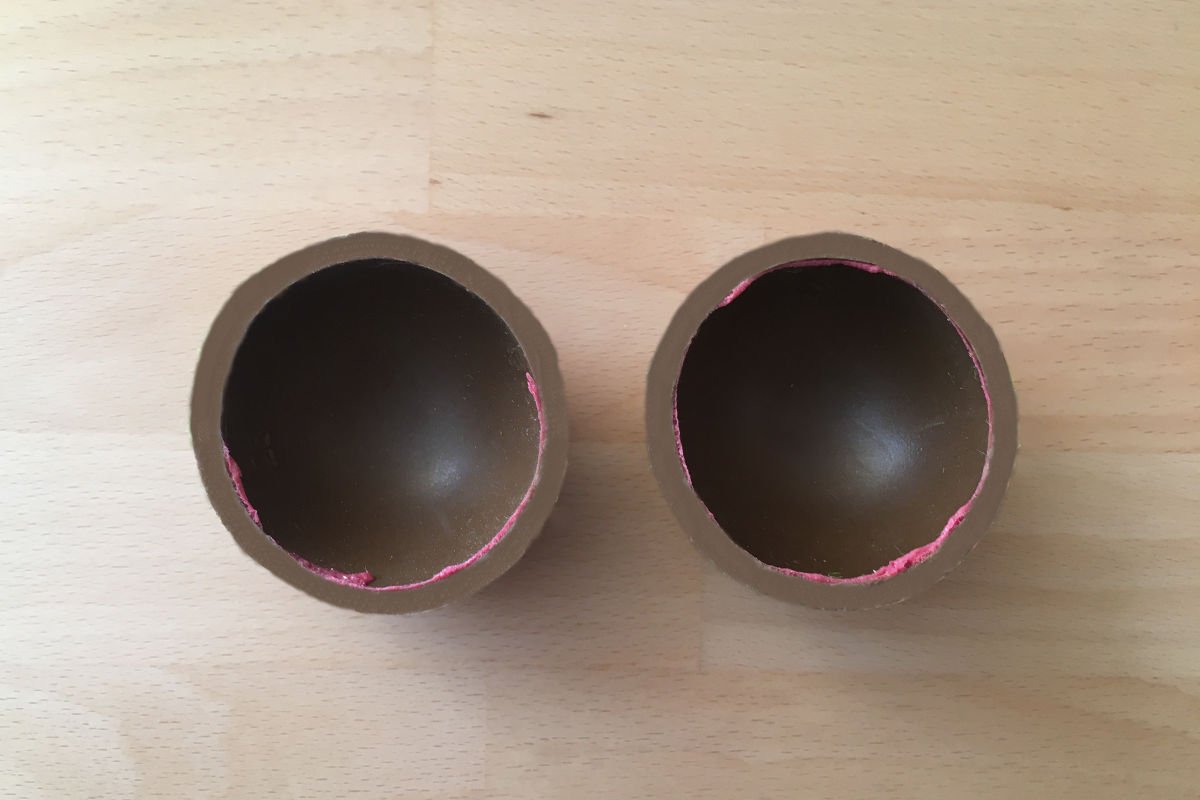
Natural rubber is used as the base material for the core of the tennis ball. Up to twelve additional substances are added to the base material to achieve the desired playing characteristics.
An extruder mixes all components and kneads them until a uniform mass is produced. In the next step this mass is cut into pieces and formed into pellets.
A worker places the pellets in a metal mould and presses them together into hollow hemispheres. During this process, the material is heated at a temperature of 150°C and vulcanised. This increases the elasticity of the hemispheres, which improves the bounce of the ball.
Now two of the hemispheres are glued together under the influence of heat to form a ball. If it is an pressurizen ball, the machine additionally fills a gas mixture into the rubber core. Then these rubber cores are roughened and coated with glue.
The Felt
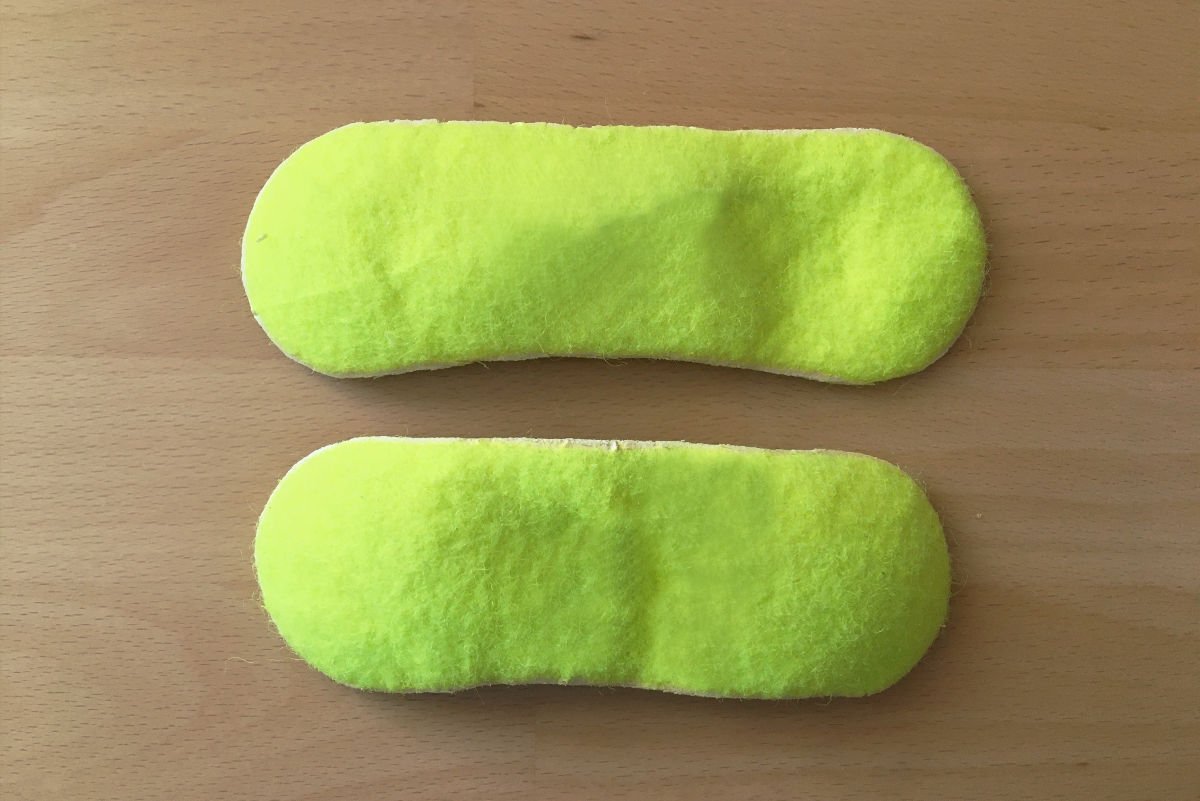
The felt consists basically of a mixture of nylon and wool. Together with cotton threads, the nylon and wool fibres are woven together to form a dense layer and then impregnated.
In the following step, a machine punches elongated pieces out of the felt and coats their edges with glue. Exactly two of these felt pieces are needed per ball.
Now the ball core can be combined with the felt. Both components are glued together under high pressure. In the last step, the balls are steamed in a special process to expand the felt and thus improve the playing characteristics of the balls.
The tennis ball is now ready. If required, the ball is also printed and packed in cans.